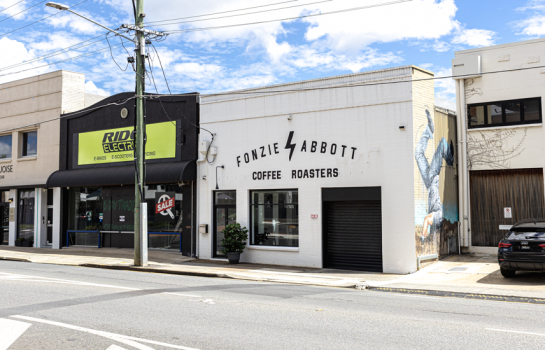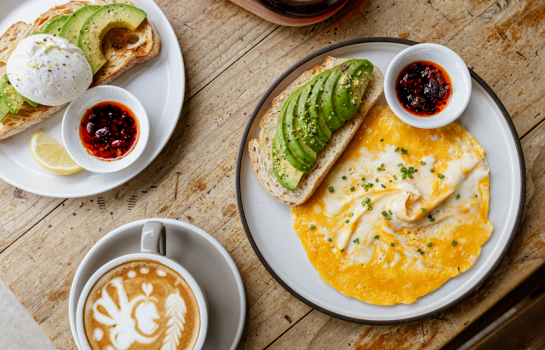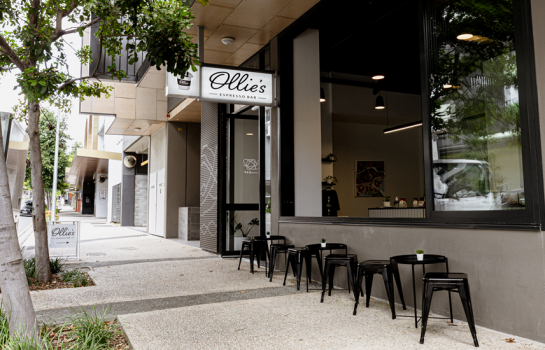Hidenori Izaki, 2014 World Barista Champion, Japan
It has to come from the heart ...
Each year, baristas from around the world compete to hopefully make it to the world championship and win the coveted title of World Barista Champion. Thousands enter but only one person will ultimately gain the title. This year it was Maruyama Coffee barista Hidenori Izaki’s turn to win. Having exhausted himself the year before and missing out on the chance, by 0.5 difference in score, to progress to the semifinals, Hidenori turned to complete focus for his 2014 game plan. The Japanese master was the first ever winner from Asia, using two varieties of red caturra and typica grown at Monte Copey micromill near the cool, mountainous town of Santa Maria de Dota, Tarrazu, Costa Rica. The Weekend Edition caught up with the 2014 World Barista Champion who was in Brisbane to pay a visit to Wolff Coffee Roasters and one of Brisbane’s finest coffee and tea houses, Dandelion and Driftwood, to talk about what it took to win the coveted world title.
Congratulations on your world championship title. What was it like preparing for the competition?
It’s been a long journey. I competed in the 2013 World Barista Championship here in Australia. I came 13th and this meant I missed out on getting into the semifinals. At the time I wanted to kill myself (laughs). I had been training for one year and sacrificed a lot of my relationships with friends. I even broke up with my girlfriend. Looking back now and understanding the small differences in scores made me appreciate even more the technical experience needed to win. It was a good lesson to learn.
What did it take to win the World Barista Champion title?
Firstly, I had to win the regional title in Japan. Then I had to win the Japanese title. From their I got to compete on the world stage. To compete I had to prepare four espressos, four cappuccinos, and four original signature drinks to exacting standards in a 15-minute performance set to music. World Coffee Events certified judges from around the world evaluate each performance on the taste of beverages served, cleanliness, creativity, technical skill, and overall presentation. The top 12 competitors from the first round advance to a semifinal round. The top six competitors in the semifinal round advance to the finals round, from which one winner is named World Barista Champion!
What are some of the specific areas you worked on?
I worked incredibly hard on my extraction techniques. I knew that you either won or lost based on 0.5 differences in scores so this is where I focussed my efforts. There is so much detail in serving a coffee that all areas had to be understood from a technical point of view. Flushing the group head, cleaning the filter basket before dosing, acceptable levels of spill or waste, consistency of dosing and tamping and extraction times are all some of the areas that are heavily scrutinised.
Do you have a mentor in Japan who you work with?
Yes, my boss Kentaro Maruyama of Maruyama Coffee. Kentaro spends a lot of his time overseas purchasing coffee. He knows everything about the coffee industry and has taught me so much. Kentaro invested a lot of time and money to give me the opportunity to train for the championships.
Do you work in the cafe while you’re training?
Yes. I try to work as much as possible because I do not want to forget the meaning of interacting with the customers. This is very important as this is why we make coffee. I try to create a balance between my work and training. For half of the year I focus on my training.
Why did you choose Costa Rican coffee?
My boss Kentaro Maruyama imports coffee from Monte Copey located in Tarrazu Copey de Dota, Costa Rica. Two years ago I met Enrique Navarro, a 22-year-old farmer from the area. He was interested in the idea of working side-by-side with a younger person because he knew innovation was the key to success and felt that someone from a younger generation would grasp this concept. I was determined to use Monte Copey’s coffee, but I was concerned about the acidity of the espresso, due to the coffee’s plantation elevation of 1840 masl. To achieve the perfect coffee, Enrique and I came up with the idea of espresso and cappuccino – focussed beans. Both coffees were specifically produced to meet my precise flavour requirements.
What was the time difference between roasting your coffee and extracting your coffee for the final?
Each category was different but my espresso was fourteen days. I tried eight different roasts. This was the perfect time for this particular blend.
What do you think were the secrets to your success?
I wasn’t pursuing the world title. I was pursuing how to serve the best espresso in the world. I wanted to show the world my dedication and passion to coffee. It has to come from the heart and letting the judges know that was important to me.
What are your plans for the future and where do you see the coffee industry going?
My next step is to become a green bean buyer. My goal is to bring producers and baristas closer. Why? Baristas know what their customers want and this can offer ground-level input for the producers when growing their crops. I also want to continue working for Maruyama Coffee in their quest for importing the best coffee.
What advice can you pass on to other budding baristas?
I think it is very important that anyone entering the industry understands they are in the customer service industry. The baristas are the ones who meet with the customers. It is not just our job to serve coffee but to also interact with our customers. Some baristas just focus on the extraction techniques and not the customer. All they care about are the numbers and machines and equipment. This is only part of the process. We need to be very professional about our customer service. Make it simple! Baristas are professionals serving coffee, why don’t we make it simpler?




